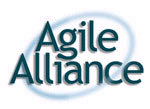Working Together In "War Rooms" Doubles Teams' Productivity, University Of Michigan Researchers Find

PHILADELPHIA---Teams of workers that labored together for several months in specially designed "war rooms" were twice as productive as their counterparts working in traditional office arrangements, a study by University of Michigan researchers has found. Results of the study will be presented Dec. 6 at the Association for Computing Machinery 2000 Conference on Computer Supported Cooperative Work.
Recently, many companies in the software industry have been experimenting with putting teams of workers into "war rooms" to enhance communication and promote intense collaboration, explains Stephanie Teasley, an assistant research scientist in the U-M School of Information's Collaboratory for Research on Electronic Work.
Instead of toiling in separate cubicles, workers sit at wall-less workstations in one big, open room. The room is typically outfitted with central worktables, whiteboards and flip charts to facilitate group discussions. While companies expect benefits from such arrangements, workers sometimes balk at the idea, fearing they'll sacrifice privacy and the quiet they need to concentrate on demanding tasks. The U-M researchers say their study is the first to closely examine the effects of what they call "radical collocation" on both productivity and worker satisfaction.
Teasley collaborated on the project with Mayuram Krishnan and Judith Olson of U-M and Lisa Covi, who was at U-M when the work was done but now is at Rutgers University. The group studied six software development teams at a major automobile company, all of which had little or no experience working in war room settings. The researchers evaluated the workers' productivity using measures commonly used in software development; then they compared the war room teams' scores with productivity data the company had collected on software development teams working in traditionally arranged offices. The researchers also interviewed the workers and had them fill out questionnaires at the beginning and end of the project. In addition, they made detailed observations of two teams---sitting in on meetings and conference calls, watching the teams solve various kinds of problems and photographing them in action.
Teams in the war room environments were more than twice as productive as similar teams at the same company working in traditional office settings. In a follow-up study of 11 more war room teams, productivity nearly doubled again, making the war room teams almost four times as productive as their counterparts in ordinary offices. The setting alone may not account for all of the productivity differences; teams working in the war rooms also used techniques designed to accelerate software development. However, those techniques could only be carried out by radically collocated teams, says Teasley.





